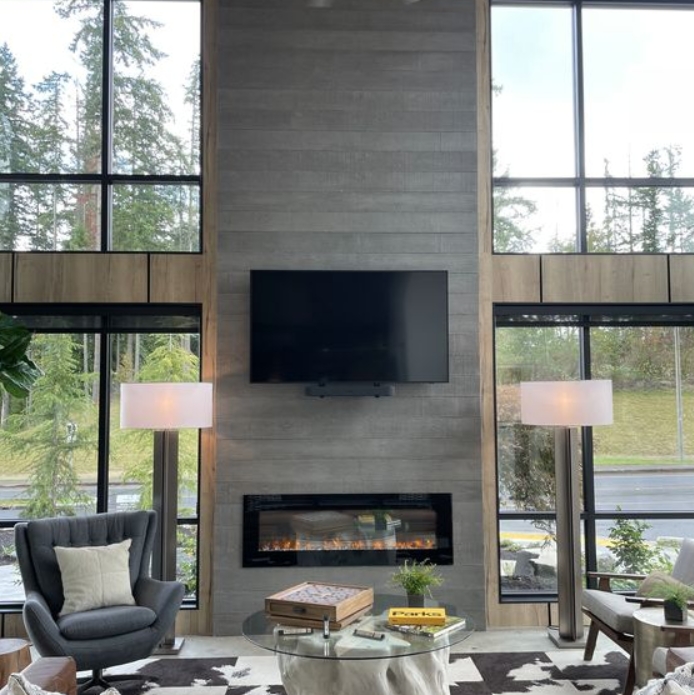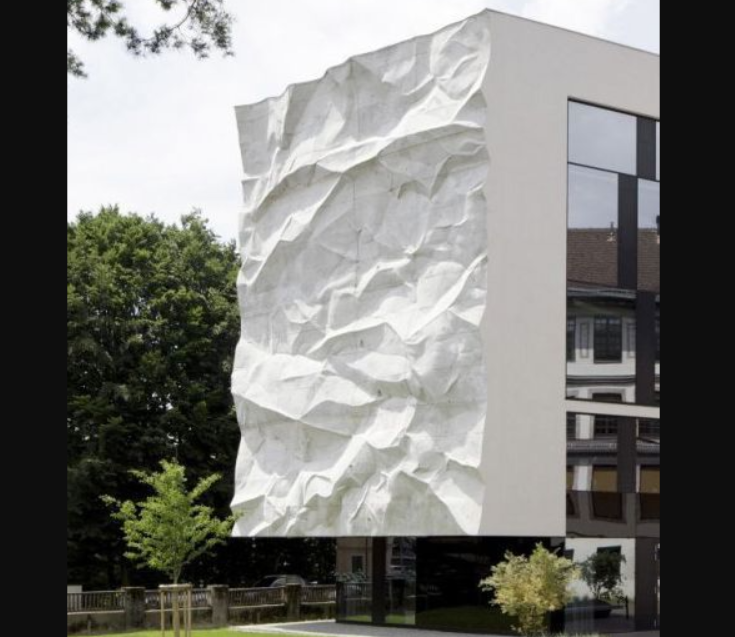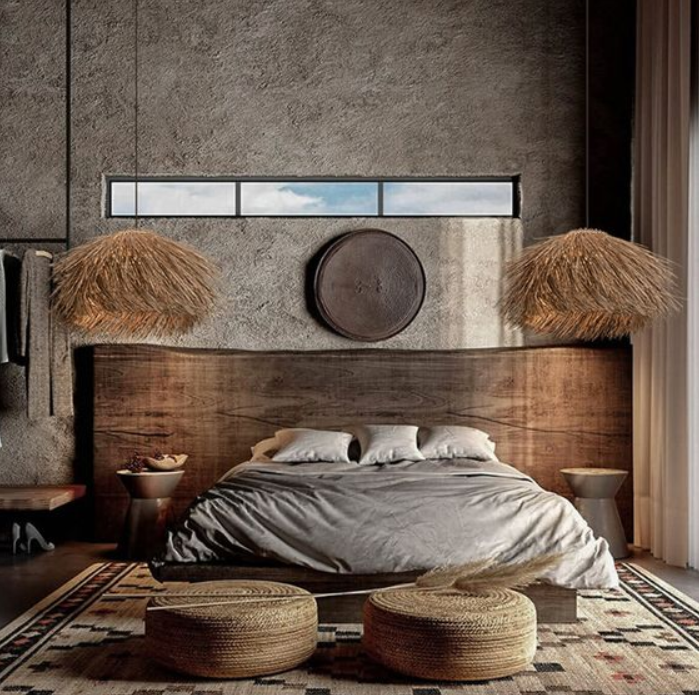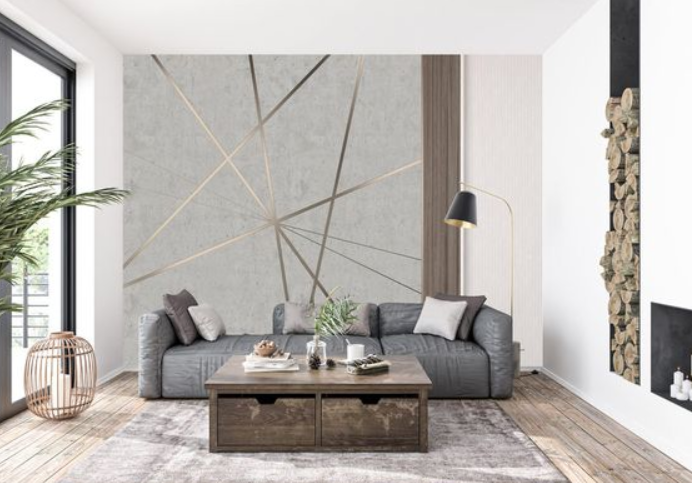Once relegated to industrial spaces, concrete has emerged as a versatile design element in modern architecture. The growing popularity of concrete walls for house interiors and commercial spaces has sparked interest among homeowners, architects, and designers.
This article will guide you through various types of concrete wall finishes and designs, helping you make informed decisions for your next project.
If you’re a homeowner looking to renovate, an architect seeking innovative solutions, or a designer aiming to create striking interiors, read on to discover the best concrete wall designs.
Types Of Concrete Wall Designs
The world of concrete walls offers a diverse range of options, each with unique characteristics and applications. Here are ten popular types of walls, interior and exterior:
1. Flat Concrete Wall
The flat concrete walls offer a sleek, modern aesthetic. Available with us in sizes 1200 x 600 mm and 900 x 550 mm, these lightweight precast concrete walls come in exposed, pitted, or polished finishes. Color options include charcoal grey, ivory sand, smoke grey, and custom hues.



2. Biillow Concrete Wall
Another Cretekala Studio product, the Biillow concrete wall, features a unique textured surface. These 900 x 550 mm panels are available in exposed, pitted, or polished finishes, customizable color options, and popular colors like charcoal grey, ivory sand, and smoke grey.



3. Green Concrete Walls (Living Walls)
Green concrete walls, or living walls, incorporate vegetation into concrete structures, using built-in pockets for soil and irrigation. Plants are chosen for their adaptability to vertical spaces and local climates. These walls enhance air quality, offer thermal insulation, and create a visually appealing fusion of nature and architecture.



4. Board-formed Concrete Walls
Horizontal concrete wall design mimics wooden planks, offering a rustic yet modern look. These walls are often used in interior and exterior applications, uniquely combining natural and industrial elements that complement various architectural styles and design preferences.



5. Crumpled Paper Concrete Panels
Crumpled Paper Concrete Panels look like the texture of crumpled paper in concrete form. These concrete wall panels feature irregular, organic patterns that create depth and visual interest. They offer a unique blend of industrial and artistic aesthetics, suitable for both contemporary and avant-garde interior designs.



6. Raw Concrete Wall Design With Cement
Raw concrete walls showcase the material’s natural texture and imperfections. This style, often associated with brutalist architecture, leaves the concrete exposed after removing the formwork. The result is a surface that displays its construction marks, including seams, tie holes, and color variations.



7. Split Faced Concrete Wall
Split-faced wall panels are created by molding concrete with a textured face and then splitting it to reveal the rough interior. This technique results in a natural, rugged appearance similar to cut stone. Split-faced concrete walls are often used in exterior applications, retaining walls, and as accent walls in rustic interiors.



8. Geometric Concrete Wall Panels
Geometric Concrete Wall Panels showcase precise, repetitive patterns of shapes like triangles, hexagons, or cubes. These panels add a modern, sophisticated touch to any space. The interplay of light and shadow on these geometric surfaces creates dynamic visual effects, enhancing the overall ambiance of the room.



9. Fluted Concrete Wall
Fluted walls feature vertical grooves or ridges along their surface. These are created using specialized formwork or adding pre-made fluted panels to existing walls. The vertical lines add dimension and create attractive light and shadow effects, enhancing the wall’s visual appeal.



10. Polished Concrete Wall
Polished concrete walls have a smooth, reflective surface created by grinding and treating the concrete with a densifier. This enhances durability and stain resistance. Common in high-end residential and commercial spaces, they offer a sleek, low-maintenance finish with a modern aesthetic.



Benefits Of Concrete Walls
Concrete walls offer numerous advantages, the first being that they withstand time and environmental factors. A few more benefits of concrete walls are:
- Concrete adapts to various aesthetics, from raw industrial to sleek modern.
- Long-term durability makes concrete a cost-efficient choice.
- Concrete walls provide excellent sound insulation and temperature regulation.
Incorporating Concrete Walls In Different Spaces
Concrete walls can enhance various areas of your home or commercial space:
1. Living rooms and common areas
Concrete walls serve as striking focal points in living spaces. Cretekala Studio’s flat or Biillow walls can create an impressive backdrop for artwork or furniture.
2. Kitchens and bathrooms
Concrete’s water-resistant properties make it ideal for kitchens and bathrooms. Polished concrete walls add a sleek touch to these functional spaces.
3. Outdoor spaces and retaining walls
For exteriors, split-faced or textured concrete walls offer durability and aesthetic appeal. They function well as retaining walls or decorative elements in landscaping.
Considerations For Wall Concrete Design
When incorporating concrete walls, consider:
- Balancing concrete with other materials: Pair concrete with wood or metal for a harmonious look.
- Lighting and concrete walls: Proper lighting can enhance the texture and color of concrete surfaces.
- Maintenance and care: While low-maintenance, concrete walls may require occasional sealing or cleaning.
Read More –
Conclusion: Concrete Walls Offer A Unique Blend Of Aesthetics And Functionality
As sustainable building practices gain traction, concrete walls will continue to evolve, incorporating recycled materials and innovative finishes.
The most significant benefit of choosing concrete walls is that you invest in a timeless, versatile design element that will last a long time. However, if you are confused about which one best suits you, here are my three recommendations.
Consider flat concrete walls for a modern, durable solution. The Billow concrete wall is an excellent choice for texture and visual interest. For eco-conscious design, green concrete walls provide both beauty and environmental benefits.
Ready to transform your space with concrete walls? Browse our concrete collection today.
FAQs
Concrete walls include flat, textured, board-formed, split-faced, fluted, and polished varieties.
The three main types of walls are load-bearing, non-load-bearing, and retaining.
The four main types of retaining walls are gravity walls, cantilever walls, anchored walls, and masonry walls.
Common types of concrete include ready-mix, precast, reinforced, prestressed, and lightweight concrete.
Type 3 concrete, also known as high early strength concrete, gains strength faster than standard concrete.
Hi! I’m Siddhant, Founder of Cretekala. Founded in 2019, my civil engineer background and blend of creative journey gave rise to Cretekala, which now stands with a team of 40. I love collaborating with pioneers in the industry and innovating new concrete designs that bring new aesthetics to life. Other times, I’m here sharing my journey and experience with decorative concrete online!
